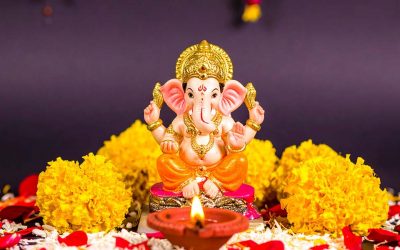Exploring the Rich Traditions of Bhima Ratha Shanthi
Introduction to Bhima Ratha Shanthi
Bhima Ratha Shanthi, a revered milestone in Hindu tradition, celebrates the completion of 70 years of life, embodying the essence of wisdom, experience, and longevity. This occasion holds immense cultural significance, symbolizing the transition into the “Sannyasa Ashrama” and inviting cherished rituals and festivities. The rich tapestry of Bhima Ratha Shanthi intricately weaves together tradition, family bonds, and spiritual significance, fostering a celebration that transcends generations.
Understanding Bhima Ratha Shanthi
The term “Bhima Ratha Shanthi” originates from two pivotal elements: “Bhima,” representing the age of 70, and “Ratha Shanthi,” symbolizing the chariot of peace. This celebration marks the culmination of the seventh ashrama in Hindu philosophy, denoting a phase of tranquility, introspection, and spiritual growth.
Significance of Bhima Ratha Shanthi
Bhima Ratha Shanthi embodies a juncture where a person transitions into a phase characterized by peace and reflection. It signifies the accumulation of knowledge, experiences, and the ability to guide and inspire younger generations. This occasion reflects the attainment of a revered age, honoring the individual’s journey through life.
Rituals and Traditions
The festivities surrounding Bhima Ratha Shanthi are a harmonious blend of rituals, customs, and traditions, each carrying profound symbolism and purpose.
Ganapati Puja: The commencement of Bhima Ratha Shanthi often begins with Ganapati Puja, invoking the blessings of Lord Ganesha to remove obstacles and bless the celebration with auspiciousness.
Gauri Puja: Another significant ritual is the Gauri Puja, primarily performed by married women in the family, seeking the well-being and longevity of the individual reaching this milestone.
Homam and Abhishekam: Central to the celebration are Homam, a sacred fire ritual, and Abhishekam, the ceremonial bathing of deities, signifying purification and seeking divine blessings for the celebrant.
Feeding the Elders: A touching tradition during Bhima Ratha Shanthi involves honoring and feeding the elders in the community, signifying respect, love, and seeking their blessings for longevity and prosperity.

Customs and Cultural Elements
The celebration of Bhima Ratha Shanthi is characterized by vibrant cultural elements, showcasing the rich tapestry of Indian traditions and customs.
Traditional Attire and Adornments: Participants often adorn themselves in resplendent traditional attire, donning vibrant colors and intricate jewelry, highlighting the importance of cultural identity and heritage.
Cultural Performances: Music, dance, and cultural performances add a jubilant atmosphere to the celebrations, emphasizing the importance of preserving and promoting traditional art forms.
Satsang and Spiritual Discourses: Amidst the festivities, spiritual discourses and satsangs play a pivotal role, imparting wisdom and encouraging individuals to lead a righteous life guided by spiritual values.
Embracing Togetherness and Gratitude
Bhima Ratha Shanthi transcends a mere celebration; it’s a poignant display of love, respect, and gratitude towards the celebrant and their contributions to family and society. It’s a time to rejoice in shared memories, express gratitude, and anticipate the future with optimism and joy.

Conclusion
Bhima Ratha Shanthi is an embodiment of cultural heritage, familial bonds, and spiritual significance. It stands as a testament to the reverence for age, wisdom, and the values that unite generations. As this celebration continues to resonate through time, it reinforces the importance of respecting elders, cherishing cultural legacies, and embracing the richness of life’s milestones with grace and appreciation.
In preserving and honoring Bhima Ratha Shanthi, we nurture a cultural legacy that fosters unity, respect, and familial harmony. It serves as a reminder to cherish life’s journey, embrace wisdom, and celebrate the interconnectedness of generations within the tapestry of tradition.






